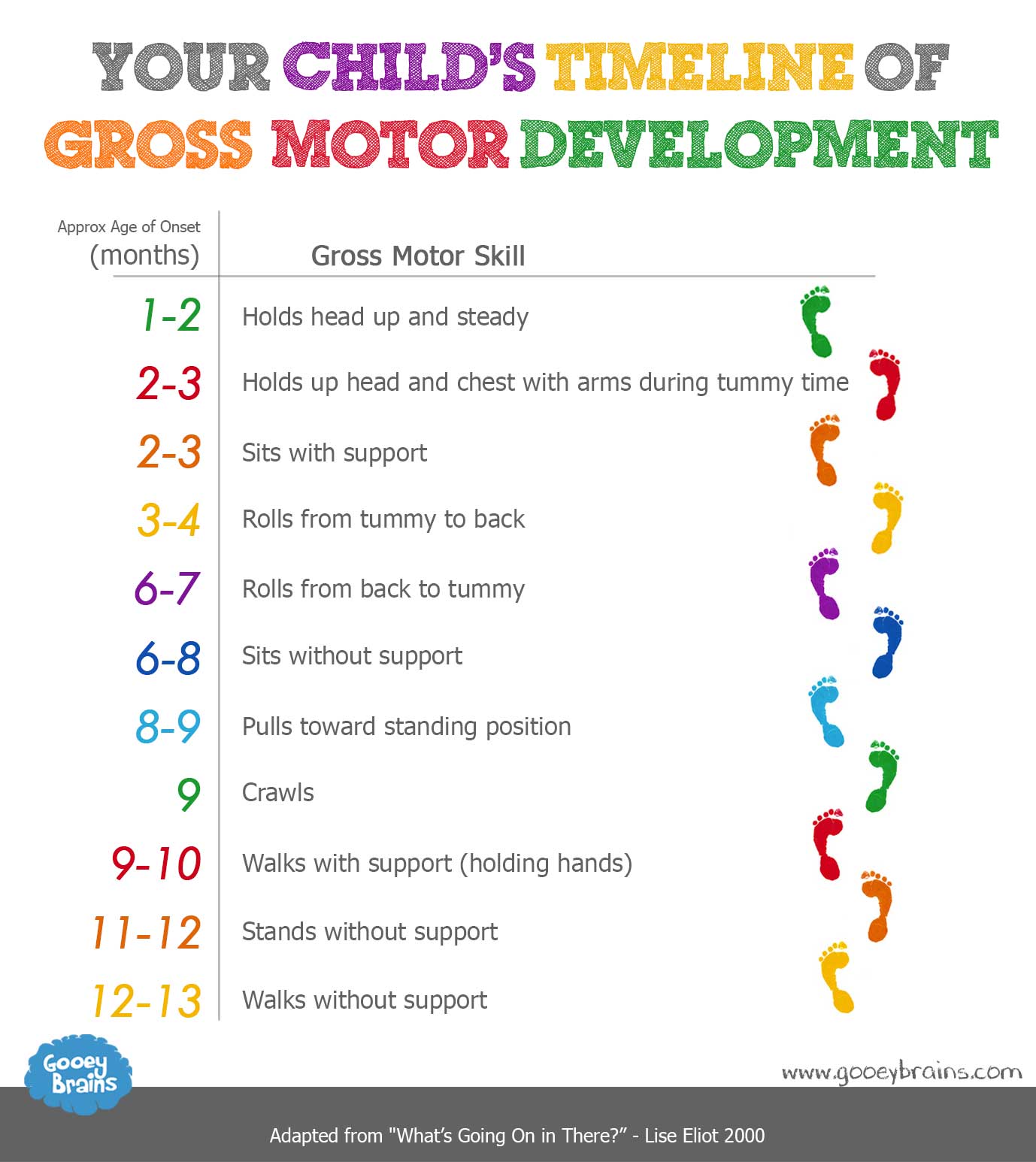 Source: bing.com
Source: bing.comAs parents, we are always eager to see our little ones grow and develop at a healthy pace. One of the key indicators of a baby’s growth is their motor skills development. Motor skills are movements that are coordinated by the brain and involve the muscles of the body. It includes both gross motor skills, such as crawling and walking, and fine motor skills, such as grasping and manipulating objects. To help parents keep track of their baby’s motor development, we have created a comprehensive Baby Development Motor Skills Chart.
Table of Contents
Gross Motor Skills Development
Gross motor skills involve the use of large muscle groups in the body for movements such as crawling, standing, walking, and jumping. Here is a breakdown of gross motor skills milestones:
- 1-2 months: Baby can lift their head briefly while lying on their stomach, and they may begin to kick their legs.
- 2-4 months: Baby can control their head movements and begin to roll over from their stomach to their back. They might also start to push up on their arms while lying on their stomach.
- 4-6 months: Baby can sit up with support and may begin to rock back and forth on all fours. Some babies may start to crawl or scoot across the floor.
- 6-9 months: Baby may start crawling on hands and knees or creeping on their stomach. They might pull themselves up to a standing position and begin cruising along furniture.
- 9-12 months: Baby can stand independently and may take their first steps. They might also start walking while holding onto furniture for support.
Fine Motor Skills Development
Fine motor skills involve the use of small muscle groups in the body for movements such as grasping, reaching, and manipulating objects. Here is a breakdown of fine motor skills milestones:
- 1-2 months: Baby may start to grasp objects placed in their hands, but they are not able to hold onto them for long.
- 2-4 months: Baby can hold onto objects for longer periods and may begin to reach for objects placed in front of them.
- 4-6 months: Baby can hold onto objects with both hands and transfer them from one hand to the other. They might also start to use their fingers to pick up small objects.
- 6-9 months: Baby may start to use a pincer grasp, using their thumb and forefinger to pick up small objects. They might also begin to imitate gestures such as waving and clapping.
- 9-12 months: Baby can use a pincer grasp to pick up small objects, and they may start to use utensils to feed themselves. They might also begin to scribble with a crayon.
It’s important to note that these milestones are just a guide, and not all babies will develop at the same pace. If you have concerns about your baby’s motor development, talk to their pediatrician. They can provide recommendations for appropriate interventions or refer you to a specialist if necessary.
Frequently Asked Questions
Q: What can I do to support my baby’s motor development?
A: Providing your baby with plenty of tummy time is one of the best ways to support their motor development. You can also give them toys to play with that encourage reaching and grasping, such as rattles or soft blocks. As they get older, you can create safe spaces for them to crawl and explore, and encourage them to walk with support.
Q: What should I do if my baby is not meeting their motor development milestones?
A: If you are concerned that your baby is not meeting their motor development milestones, talk to their pediatrician. They may recommend physical therapy or refer your baby to a specialist for further evaluation.
Q: Can I do anything to speed up my baby’s motor development?
A: No, you cannot speed up your baby’s motor development. Every baby develops at their own pace, and it’s important to remember that some babies may take longer to reach certain milestones than others.
Q: Should I be worried if my baby skips a motor development milestone?
A: Not necessarily. While it’s important to keep track of your baby’s motor development, it’s common for babies to skip certain milestones or develop them in a different order.
Q: What other types of development should I be watching for in my baby?
A: In addition to motor development, it’s important to watch for other types of development such as cognitive, social, and language development. Talk to your pediatrician about what developmental milestones to expect in the first year of your baby’s life.
In conclusion, tracking your baby’s motor development milestones is an important part of monitoring their overall growth and development. Remember that every baby develops at their own pace, and if you have concerns about your baby’s motor development, talk to their pediatrician.
